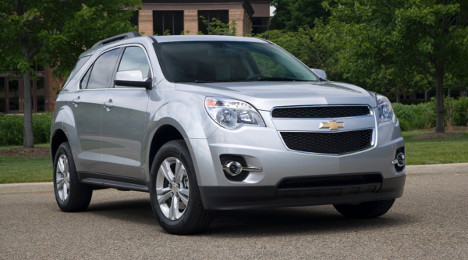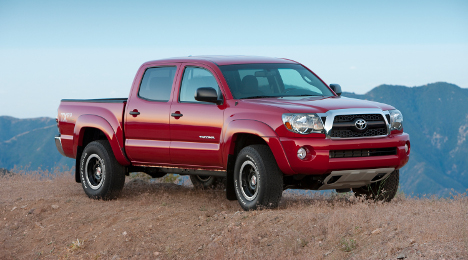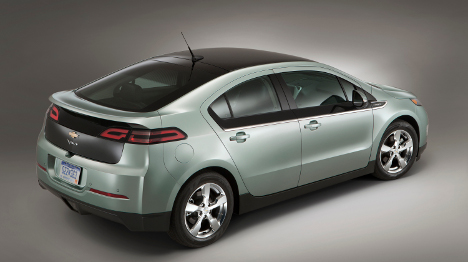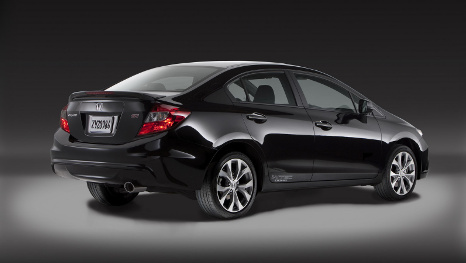In his debut commentary video, ADESA chief economist revisited one of the year’s most notable events — average wholesale vehicle prices softening below $10,000 last month.
To be exact, wholesale used-vehicle prices for July came in at an average of $9,878, a 3-percent drop from June, but a 1.4-percent increase relative to July 2014, according to the Kontos Kommentary that ADESA releases each month.
“This has been indicative of the kind of price softening we have been anticipating to be the case because of the supply growth that we’ve seen in the used-car market for some time,” Kontos said in his video that’s available in the above window. “This has been something we’ve been discussing in the Kontos Kommentary for several months now.
Kontos touched on how he plans to offer more analysis through videos on ADESA’s YouTube channel.
“We’re very excited to provide this to you,” Kontos said. “We look forward to doing more of these in the future.”
Truck depreciation is beginning to come in line with price drops for cars leading to a steady decline in auction prices.
According to the latest Black Book Market Insights report, truck depreciation has “picked up steam” over the last few weeks. This movement was highlights so far by last week’s drop of 0.41 percent or $65. This was the largest decline recorded by Black Book for truck segments so far this year.
The trend was backed up by buyers in the lanes, as Black Book editors overheard an auction goer from Nevada note, “Truck prices softened somewhat,” last week.
“Truck segment depreciation levels continue to increase but remain lower than those of car segments. Last week’s drop in values was the highest weekly decrease seen year-to-date for trucks,” said Anil Goyal, vice president of automotive valuation and analytics.
Last week, car values dropped by an average of 0.48 percent or $56, which is similar to depreciation levels seen over the past few months.
Black Book editors explained in looking at the 12-week segment moving averages, they can see how overall car depreciation averages “have reversed from the May-June time period in comparison to the July-August period,” with rates declining at a more rapid pace as summer progresses.
Taking a look at truck value movement last week, the best performers were the full-size passenger vans with depreciation of just 0.20 percent or $24. The minivan cargo segment also performed well, with a decline of 0.20 percent or $24.
Full-size crossovers took the biggest hit out of the truck segments with a drop of 1 percent or $164.
For the cars, compact cars continued to see significant price drops, declining by 0.72 percent or $58 last week.
The full-size car segment also saw prices suffer with rates dropping by 0.70 percent or $69.
On the other hand, Black Book editors pointed out, the luxury level car and prestige luxury car segments performed the best out of all the cars last week, with rates dropping less than 0.25 percent each.
Depreciation slowed marginally in July, though downward pressure proved to be a bit worse than historically seen in mid-summer.
That’s according to the latest Guidelines report from NADA Used Car Guide, which reported prices of used vehicles up to 8 years in age fell by 2.2 percent last month from June rates.
This hit about the midpoint of NADA UCG’s initial forecast of 2 percent to 2.5 percent depreciation for the month.
The report shared that this past month’s depreciation was much better than the 3.2-percent drop seen during July last year, but “it was somewhat worse than the month’s historical performance,” Jonathan Banks — senior director of vehicle analysis and analytics — wrote in the report.
As a result, NADA UCG’s seasonally adjusted used-vehicle price index fell 0.9 percent from June to 122.6.
And the price trends seen last month won’t be news to many in the industry who follow auction price trends. Once again, cars experienced dramatic depreciation in July, while utility and pickups saw much better price retention.
According to the data, subcompact car prices saw some of the biggest price declines in July, falling by an average of 4.3 percent, as one of the market’s “weakest performers.”
The report says that since March, prices for subcompacts have dropped by 13 percent — the biggest decline out of all segments.
Compact and mid-size car prices aren’t fairing much better, as prices for the two fell by an average of 3.2 percent in July, taking rates 11 percent lower than they were at the end of Q1.
And year-over-year, subcompact and compact car prices were 2.0 percent and 7.5 percent lower in July, respectively.
“Luxury car prices have not fared any better,” Banks said, pointing out luxury car depreciation — similar to mainstream cars — has been above average over the second quarter of 2015.
Prices for luxury mid-size cars fell by 3.4 percent last month, followed by luxury compact and luxury large cars, which dropped by 2.4 percent and 2.7 percent, respectively.
Trucks still doing “exceptionally well”
Now, turning to those ever-popular larger models — trucks and SUVs — where the depreciation story is quite different.
Banks pointed out that trucks have done “exceptionally well.”
Here are some stats backing up that assertion:
- Compact and midsize utilities, both mainstream and luxury, dropped in price by an average of 1.6 percent from June.
- Midsize vans only dropped by 0.9 percent month-over-month.
- Large pickup prices were 7.6 percent higher than the same period last year.
- Midsize utility and large SUV segment prices were 4.2 percent and 3.8 percent higher in July than last year, respectively.
“With prices unchanged from June, large SUVs and large pickups defied depreciation’s downward pull last month. In particular, large pickups have been impressive for some time now,” Banks said.
Prices for large SUVs and large pickups have dropped by an average of just 4 percent this year.
Banks said this was “remarkable considering the thousands of additional miles and wear and tear the majority accrued over the period.”
Black Book analysts also commented on this anomaly, noting trucks continue to buck summer depreciation trends and show lighter price cuts than cars.
According to Black Book data, truck segments held seven of the top spots for strongest price retention in July. These were led by the full-size SUVs, whose prices remained unchanged from June to finish the month with an average price of $27,970.
Other truck segments with low monthly depreciation levels in July, according to Black Book, included full-size pickups (-0.1 percent), compact SUV (-0.3 percent), midsize SUVs (-0.7 percent), midsize pickups (-0.7 percent) and compact pickups (-0.7 percent).
“At a time of year when everyone expects depreciation to begin picking up steam, the truck segment continues to hold retention well helping the overall values,” said Anil Goyal, vice president of automotive valuation and analytics for Black Book. “It will be extremely interesting to see what the next few months hold with lease return supply building and new model year arriving at dealer lots.”
For the first time this year, the average monthly wholesale used-vehicle price fell below $10,000, as July continued a string of heavy sequential price drops that has now reached three consecutive months.
That’s according to the July edition of Kontos Kommentary, where ADESA chief economist Tom Kontos attributed the continued price drops to increasing supply.
“Supply growth continues to put downward pressure on prices despite strong demand driven by relatively high levels of retail used vehicles,” Kontos said in the report, “especially for certified pre-owned vehicles.”
To be exact, wholesale used-vehicle prices for July came in at an average of $9,878, a 3-percent drop from June but a 1.4 percent increase relative to July 2014, according to the report.
According to NADA data, July resulted in an 11.6-percent year-over-year increase in used-vehicle sales by franchised dealers and a 15-percent increase for independent dealers. Based on the numbers from Autodata Corp., CPO sales were also up 4.2 percent month-over-month and 11 percent year-over-year.
Kontos also pointed to the trend of lower fuel prices continuing to aid the prices of pickups, which were up 2.2 percent month-over-month.
That being said, beneficial fuel prices haven’t shielded every larger-vehicle segment from decline.
According to data provided by ADESA Analytical Services for the month of July, luxury SUVs took the biggest month-over-month hit, taking a 10-percent dip from June and a 7.9-percent decline from July 2014.
Compact cars saw the largest month-over-month increase in prices at auctions in July, increasing by 3.1 percent.
As for seller segments, Kontos said vehicles remarketed by OEMs saw a steep decline in July.
“Average wholesale prices for used vehicles remarketed by manufacturers were down 10.2 percent month-over-month and 14.7 percent year-over-year, as prices for off-rental program vehicles continue to be negatively affected by abundant supply,” Kontos said. “The same goes for off-rental risk vehicles.
“Prices for fleet/lease consignors were up a modest 0.3 percent sequentially and down 0.2 percent annually,” he added. “Dealer consignors saw a 7.6-percent price decrease versus June and a 1.9-percent decrease relative to July 2014.”
Trends shifted a bit in the lanes this past week, with a reversal of the pattern of depreciation the industry has come to expect this year.
Last week, according to the latest Black Book Insights report, the car segments averaged lighter-than-normal depreciation, while trucks saw prices drop at a more rapid rate.
As far as price movement goes, “A broad drop in values across all car segments was led by the entry-level cars. pickup trucks and full-size van truck segments continue to hold values well,” said Anil Goyal, vice president of automotive valuation and analytics.
Overall, car prices fell by an average of just 0.35 percent or $41. Black Book analysts pointed out this number is lower than the depreciation rates seen in the previous four weeks.
The truck segments saw average depreciation of 0.31 percent or $50, which is a bit higher than trends seen over the past month.
Taking a look at the car price movement, all the segments Black Book tracks saw prices drop by over 0.20 percent. The entry-level car segment saw the highest depreciation once again with a drop of 0.79 percent or $52.
And interestingly, although the sporty car segment has been one of the best performers earlier this summer, these models saw an average drop of 0.43 percent or $68 last week.
The best performing car segment in the lanes last week was the entry midsize cars, which saw prices slide by 0.21 percent or $19.
On the truck side of the market, depreciation picked up a bit, but some of the usual strong performers continued to lead the pack.
For example, the compact pickups were the only segment to see an increase in price last week; rates for this segment were up by 0.30 percent or $44.
And both pickups trucks and the full-size van segments held their values well. For example, the full-size pickups saw a drop of just 0.14 percent or $16, while prices for the full-size van cargo and full-size van passenger segments stayed consistent week-over-week.
The worst performing truck segment last week was the full-size CUV group, which saw prices drop by 0.68 percent or $112.
Black Book editors also pointed out last week in the lanes, dealers from around the country were “finding it harder to spot clean-condition vehicles at auction.”
This assertion was backed up by dealer and buyer comments at auction.
For example, Black Book editors overheard a buyer from Tennessee say there were an “above normal amount of average and rough cars here today, so sales were a bit slow,” while another buyer from the same state noted, “Not a lot of clean cars at this location today, but dealers were paying good prices for what did sell.”
Numerous reports highlighting the alarming depreciation rate of electric vehicles have been surfacing, and this trend could be a challenging one for the industry.
In fact, many of the 2012 model EVs now cost less than their gas counterparts — surprising, after new premiums were so steep just a few years ago.
And Larry Dixon, senior manager of market intelligence at NADA Used Car Guide and speaker at the upcoming Used Car Week conferences, touched on this very topic in a recent Used Car & Truck Blog post.
Dixon participated in a panel at the 8th annual Electric Vehicle Roadmap conference in Portland, Ore., and many of the challenges facing EVs were top-of-mind at the event, one being very poor residuals.
“Excluding those produced by Tesla, electric vehicles (no matter the form) have had a hard go of it. Higher upfront costs, range and infrastructure concerns, technology apprehension, and lower gas prices have dogged EV demand,” Dixon said in the blog post.
And it’s not just used EVs and alt-fuel vehicles that are suffering. According to NADA data, new plug-in hybrid sales were down by 34 percent through June, and sales for the the Chevy Volt, Nissan Leaf, and Toyota Prius PEV fell by 35 percent, 23 percent and 69 percent, respectively, over the first half of the year.
“Plug-in electric sales were up by 30 percent, however; the lift was caused by new model launches, rather than improving demand,” Dixon added.
But the used EV market is taking an even bigger hit. Though used EV prices are dropping considerably, seemingly making them a good buy for the budget-conscious, fear of long-term costs keeps many buyers away from the plug-in options.
“Used-vehicle buyers tend to lean more toward frugality than their new vehicle counterparts. As such, concerns over upfront cost and long-term durability are more amplified,” Dixon said. “’How much will the battery degrade over time? How will this impact driving distance? What happens, and what will it cost, if the battery needs to be replaced?’ are just a few of the unknowns eating into used EV demand.”
Dixon also pointed out a two other factors that are contributing to downward pressure on used EV prices:
- Very low new vehicle lease programs for EVs
- New EV tax credits, unavailable to the used buyer
Offering a current market example, according to NADA UCG data, trade-in values for the 2013 Nissan Leaf are 30 percent lower today than last year.
Dixon offered this stat for comparison: Trade-in values for 2013 gas powered compact and mid-size cars are down by just 12 percent.
“Abysmal depreciation is a major problem. It’s not only a poor reflection on the technology, it puts EVs at a cost-of-ownership disadvantage relative to internal combustion engine (ICE) vehicles,” said Dixon. “It also increases the amount of money automakers have to put toward lease-related expenses, which is a big deal given that leasing accounts for 55 percent of all new EV deliveries.”
And even though many used buyers may be deterred by concern over battery life and other cost-of-ownership factors, low prices on low-mileage, late-model EVs do “make them incredible values,” Dixon pointed out.
“Even though we fully expect Leaf deprecation to remain high moving forward (not to pick on the Leaf, we expect this for most EVs), prices are now low enough that net energy savings and ― theoretically ― lower routine maintenance costs make the Leaf a competitive alternative to the Versa and other similar gas-powered cars,” Dixon continued.
But to really capitalize on used EV sales, dealers will need to be able to convince consumers that used EVs and their batteries can stand the test of time.
“Consumers have experienced gas-powered cars in a hands-on fashion for over a century, but have only been exposed to plug-in electric vehicles for a handful of years,” Dixon said. “As such, an extraordinary amount of time needs to be spent marketing not only the benefits of the products themselves, but also touting durability milestones as time passes, which includes battery density, maintenance costs and more.”
Auto Remarketing has been following this story closely as many EVs start entering the late-model used market.
Earlier this month, Black Book released data that showed most 2012-model EVs have depreciated to such a level that premiums over their gas counterparts no longer exist.
According to Black Book, in some instances, consumers can shell out up to $20,000 more for a new electric version of a vehicle than they would for the sister gas model.
That said, three years down the road, Black Book pointed out, EVs could easily be priced $900 below their gas counterparts, showing rapid declines in price.
And a recent Yahoo Autos blog report asserted that in light of dropping residuals for used EVs, they could be a could sell for the budget-conscious customer — that is, if they can be convinced of the longevity and dependency of such a vehicle.
When EVs first hit the market, federal tax credits and significant manufacturer incentives made these models an enticing buy for many fuel-conscious auto shoppers. But as blog post author Steven Lang pointed out, “there are no similar incentives for buying used EVs,” and demand hasn’t lived up to hype, putting extreme downward pressure on used prices for some of these models. And with oil prices still far below average, fuel economy isn’t currently much of an incentive either.”
While strong used-car prices likely comes as good news for folks selling used vehicles in the wholesale markets, there are also a few positive implications for dealers on the retail side.
According to the latest Manheim Used Vehicle Value Index report, wholesale prices were up 1.1 percent year-over-year in July (on a mix-, mileage- and seasonally adjusted basis), and the monthly reading for the index was at 124.1.
In the report, Cox Automotive chief economist Tom Webb explains what these “modestly higher” used prices mean for details on the retail side.
“The continued strength in wholesale pricing reflects a retail used-vehicle market where dealers are enjoying higher throughput, achieving ever-greater efficiencies, and still growing F&I income,” Webb said.
“Although new-vehicle transaction prices continue to rise, incentive activity (both transparent and opaque) is on the rise. This likely left the new-vehicle market net neutral with respect to its impact on wholesale pricing in July,” he continued. “This benign environment may be negatively impacted by past and expected exchange rate movements and shifting global demand.”
Of course, not all segments of the wholesale space were showing gains in July.
July was fourth straight month of declines in rental-risk auction prices (“adjusted for board shifts in market class and mileage,” Webb said).
On an adjusted basis, values for these cars fell 4.3 percent year-over-year. Unadjusted, they were off 11.7 percent.
What’s more, July marked the first time in 45 months — nearly four years — that average prices for these cars were below $14,000, Webb said.
As for supply of these cars, he added: “Auction volumes for rental-risk units in July continued to exceed their year-ago level, but were in line with the pace of 2013 and 2012. New-vehicle sales into rental increased less than 1 percent in July, resulting in a year-to-date gain of 5.9 percent.”
Breaking down dealer and commercial consignment, prices increased on a straight average for both groups.
“During the month, the average price for dealer-consigned units defied seasonal forces and increased from June due to lower average miles,” Webb explained.
Among the various vehicle types, pickups showed the most price growth (up 9.2 percent), followed by vans (up 4.5 percent), SUVs/CUVs (up 1.2 percent) and luxury cars (up 0.9 percent).
The midsize cars dipped 0.2 percent and compact cars fell 6.7 percent.
If it’s not on your radar already, one industry trend will be soon as the stats become increasingly hard to ignore. That is, electric vehicles’ alarming depreciation rates.
According to new data and insight from Black Book, EVs continue to face much heavier depreciation rates than their gas counterparts. In some instances, consumers can shell out up to $20,000 more for a new electric version of a vehicle than they would for the sister gas model.
That said, three years down the road, Black Book pointed out, EVs could easily be priced $900 below their gas counterparts, showing rapid declines in price.
"On several of today's popular EV vehicles, the depreciation curve is very steep, largely driven by lack of consumer demand preferences for fuel-efficient models with current price of gas," said Anil Goyal, vice president of automotive valuation and analytics for Black Book, and a speaker at the upcoming Used Car Week conferences, "Smaller cars have experienced heavier depreciation over the last 12-18 months, but it’s clear that the small mainstream electric vehicles are experiencing even heavier valuation drops."
Black Book took a look at the prices of the new Nissan Leaf versus the Nissan Versa; a Mitsubishi i-MiEV versus the Mitsubishi Lancer; Ford Focus Electric versus the Ford Focus; and a Chevrolet Volt versus Chevrolet Cruze.
The company found the EV premium over a gasoline model for mainstream brands has “pretty much disappeared” for used vehicles from an average premium of $16,600 for new vehicles.
In fact, the company found in a couple of cases, a used electric model now costs less than their used gasoline counterpart or close to it.
Take these models for example:
In 2012, the Leaf SV 4D hatchback was going for $36,380, touting a $20,287 premium over its gasoline counterpart. These days, you can get the same electric vehicle for $7,400, $900 less than the used gasoline model goes for.
Depreciation for the i-MiEV ES 4D Hatchback is even more alarming. The EV model went for $29,125 new in 2012, with a $19,887 premium over the gas model. Now, that same EV model is going for an average of $5,350, which is $3,100 less than what the gasoline model goes for these days.
Black Book also pointed out the Volt 4D Hatchback shows similar trends. Back in 2012, the EV model went for $40,431 MSRP, which was $17,060 more than the Cruze LT 4D sedan. Today, you can get the Volt for an average price of just $10,500, which is now only $650 more than the Cruze model.
This trend is coming up often in industry conversation — from a variety of angles. Though depreciation among EV vehicles may be a large pain point for those shoppers that bought them new, the used models could be a very good sell for the budget-conscious environment-minded shoppers looking for a long-term vehicle.
In a recent blog post from Yahoo Autos, author Steven Lang points out EVs are experiencing a “colossal loss of market value.”
And the luxury models aren’t immune to the surprising depreciation. According to the blog post, the 2013 Tesla Model S Performance is currently going for $74,000 and is forecasted to lose 28.9 percent of its value by July 2016, ending with a pricetag of $52,600.
EV prices are low, and are expected to get lower — proving a good buy for those customers looking for a long-term vehicle with no plans to trade-in — considering, if residuals continue down the same trajectory, many of these EVs might be looking at a 50-percent or more decline in value over the next couple of years.
The latest installment of our Q&A series from the recent Power 300 issue of Auto Remarketing features Anil Goyal, the vice president of automotive valuation and analytics at Black Book.
In this feature, Goyal looks at maximizing big data in the auto market and offers his take on used-car price trending, as well.
Auto Remarketing: What are some of the ways that big data can prevent the used-car bubble from bursting?
Anil Goyal: Data today is enabling much more visibility into the factors that go into the decision-making process. As an example, dealers and remarketers are using data and analytics in real time to make faster decisions for their businesses. Data can help us buy and sell cars for specific customers either locally or from out-of-town.
What’s more, while seasonal patterns have remained, data helps us navigate subtle hiccups that can disrupt normal seasonal patterns, such as last year when we had a longer-than-normal winter that altered the spring selling season slightly.
AR: How can big data help dealers navigate inventory management and wholesale purchases?
AG: Dealers today need to navigate their virtual inventory. Access to data can provide them with robust visibility into their entire inventory, even when they are on the road or at an auction.
Additionally, online auctions have become a normal part of business, and it’s critical to have the right insight within seconds in order to compete and maximize margin potential. Knowing exactly what’s in your virtual inventory at all times can help you make the right decisions at today’s speed of business.
AR: What are the major ways big data can help lenders and dealers work toward responsible auto finance arrangements, avoiding a repeat of 2007?
AG: Especially for lenders, data and analytics can bring more visibility into a portfolio so lenders can make more profitable decisions on which cars, trucks and segments to focus on.
What’s more, real-time data means lenders can refresh and analyze their portfolios more frequently than just annually, which allows them to have more insightful conversations with dealers about certain cars and trucks they can be more aggressive on for special offers and terms. Lastly, readily available collateral insight means lenders can make decisions without focusing primarily on credit.
AR: What are the factors behind the expected leaner price drops for used cars this year?
AG: Pent-up demand has been a large factor since the end of the recession on why used-car prices have remained strong. However, over a period of time that pent-up demand will start to work through. Now that we have had several strong years of leasing, off-lease volumes will start to chip away at the usedcar price strength. Black Book feels the industry will not begin to feel the majority of these two areas until 2015, which is what will keep prices from dropping too heavily this year.
However, access to real-time data that’s helping dealers and remarketers make quicker decisions has also helped them with their own inventory discipline and keeping them from adding too many cars at any one time.
Editor's Note: Keep tabs on Auto Remarketing Today to find Goyal's weekly look at used-vehicle pricing.
Other features in this special section include:
4 questions with NextGear’s Brian Geitner
4 questions with NADA Used Car Guide's Larry Dixon
4 questions with Infiniti CPO manager Sam Liang
Stay tuned to Auto Remarketing Today for more.
This week’s edition of Black Book Market Insights not only analyzed last week’s price movement in the lanes, but it also took into account trends seen over the past three months.
And one thing is clear. It’s not hard to figure out where consumer demand is headed these days, as the smaller car segments felt the heaviest depreciation over the last three months, while pickups, SUVs and crossovers continued to gain steam.
These trends were confirmed by buyers in the lanes, as Black Book analysts heard an auction attendee from Minnesota, say, “Car volume was greater than trucks at the auction today,” perhaps a result of more supply than current demand can cover.
And a buyer from Tennessee said he had seen “mostly below average prices on a lot of cars as dealers are dumping what they have had on their lots for too long.”
Looking at last week’s numbers first, the car segments saw average depreciation of 0.45 percent or $53, which is similar to the declines seen over the past 12 weeks.
“While car segments continued their steeper decline, luxury cars retained value better than other segments last week. compact pickup and compact SUV segments were bright spots,” said Anil Goyal, vice president of automotive valuation and analytics.
Once again, smaller cars dropped the most last week and over the last three months.
The entry mid-size car segment saw the biggest price drop last week, with rates falling by 0.64 percent or $58. The full-size cars followed with a decline of 0.60 percent or $59, while compact car prices dropped by 0.60 percent, as well ($49).
Last week, the strongest price retention among the cars was seen in the prestige luxury car segment, which saw prices drop by only 0.18 percent or $55.
Interestingly, the entry-level cars didn’t drop much last week — a decline of 0.27 percent or $18 — but this segment suffered the worst over the past three months, dropping by 9 percent in value over that period.
Compact cars also saw significant decline over the past three months, with prices dropping by 8.6 percent, in part due to a market correction from tax season highs as well as a lag in consumer demand.
This segment was followed by the entry midsize cars (with a decline of 8.1 percent) and the upper midsize cars, which dropped in price by 7 percent over the past three months.
Taking a look at truck price movement, which has been much less dramatic, last week prices for trucks dropped by 0.19 percent or $31, which Black Book analysts pointed out is in line with depreciation seen over the past 12 weeks.
This past week, the best performing truck segment — as well as the only segment to boast appreciation — was the compact pickup group, which saw prices rise by a slight 0.02 percent or $2.
Next up was the compact SUVs, which saw prices drop by just 0.03 percent or $6. Full-size pickups continue to perform well, but the price drop last week was just above the average for trucks; the segment saw prices drop by 0.20 percent or $38.
The largest depreciation among trucks seen last week was among the midsize pickups, which experienced a decline of 0.39 percent or $46.
As far as three-month trends grow, the compact pickups, midsize pickups and full-size SUVs are tops, with prices for each of these segments dropping by less than 1 percent over the period.
Editor's Note: Check out our recent Q&A with Anil Goyal to learn even more about used-car pricing trends.











